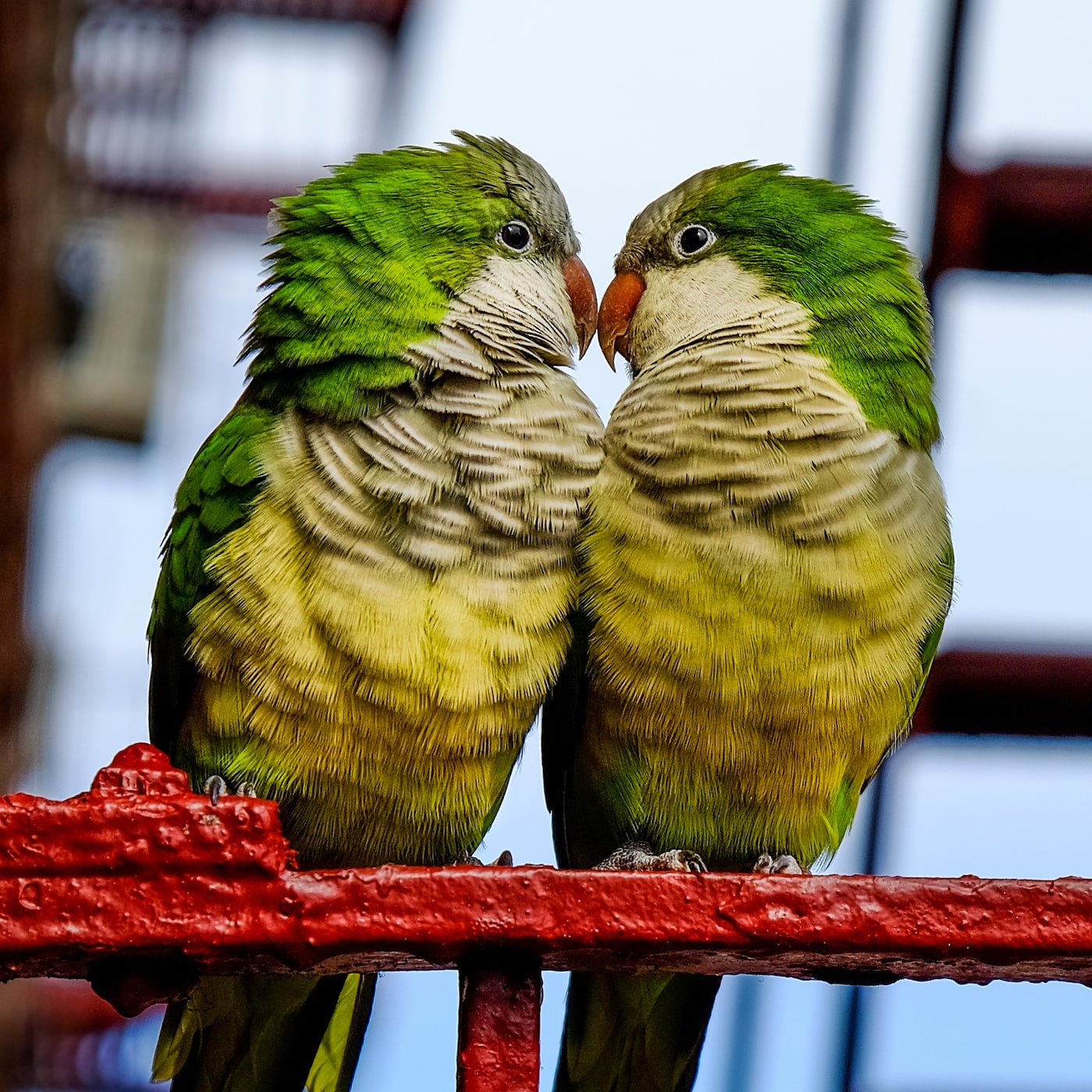Far Beyond Their Native Habitat, Parrots Rule The Roost
4:14 minutes

In many urban areas across the U.S. and abroad, feral, non-native parrots have become established. This is true in Brooklyn’s Green-Wood Cemetery, where a colony of lime green monk parakeets have inhabited a massive nest on top of the gothic entrance gate. How exactly these parrots wound up here is a bit of a mystery.
“The lore that’s passed around is that at some point a box of parrots, perhaps at the airport, got overturned,” said science writer Ryan Mandelbaum. “What’s more likely is a combination of people releasing their [pet] parrots and parrots escaping in some critical mass.”
Mandelbaum wrote the cover story for July’s issue of Scientific American all about the resilience of parrots. SciFri producer Kathleen Davis interviewed them at Green-Wood Cemetery, where they discussed why these parrots are not just surviving, but thriving.
You can read Ryan Mandelbaum’s story about the parrots of Brooklyn in Scientific American.
Ryan Mandelbaum is a science writer and birder based in Brooklyn, New York.
SPEAKER: The Kakapo may have conservation woes, but that’s not the same for all parrots. In fact, in many urban areas, non-native species of parrots have become established. Not only have they survived, but they’ve thrived. Science writer Ryan Mandelbaum wrote about the resilience of parrots for the July issue of Scientific American. Our producer, Kathleen Davis, met Ryan at Greenwood Cemetery in Brooklyn, where the most famous living residents are birds.
KATHLEEN DAVIS: The entrance of Greenwood Cemetery is striking. There is a beautiful Gothic revival gate that arches over the walkway leading into a nearly 500-acre green space. It’s an oasis in one of the largest urban areas on Earth. Some may consider this a place of tranquility in the city. But then you hear the parrots.
[SQUAWKING]
RYAN MANDELBAUM: So right now, we’re looking at a bunch of brownstone. And at the very top is a huge mass of sticks about the size of maybe an oil drum or something. And inside that huge mass of sticks at the very top of these beautiful arches are a bunch of little green parrots.
KATHLEEN DAVIS: These are monk parakeets, also known as Quaker parrots. And how they got here is a bit of a mystery.
RYAN MANDELBAUM: What we know is that probably during the ’60s and ’70s, people got really excited about pet parrots. And so there were pet parrots being brought into the United States all over. And the lore that we pass around is that at some point, some box of parrots– perhaps at the airport– got overturned. And then we had a bunch of parrots that escaped and colonized cemetery. But what’s more likely is that a combination of people releasing their parrots and parrots escaping hit some critical mass, and now we have parrots.
KATHLEEN DAVIS: You’re not supposed to release domesticated pets into the wild. That’s because most pet species aren’t equipped to survive on their own. But these monk parakeets have been perfectly fine.
RYAN MANDELBAUM: Monk parakeets are actually really common in their native habitat, which is like Southern– more temperate South America. So like, Uruguay, Northern Argentina. And there, they’re as common as pigeons. You see them everywhere doing very similar to what they’re doing now. So when they made it to New York City and to cities across the northern hemisphere, it was like, they were fine. They’re already used to human-built environments.
KATHLEEN DAVIS: Monk parakeets have established colonies in a range of northern places like Chicago, Connecticut, all the way to London. New York does get quite a bit colder than the monk parakeets’ native South American habitat. But they’ve evolved behaviorally to make this work.
RYAN MANDELBAUM: So you see that they’re building this huge stick nest, which is a pretty rare behavior in parrots. And the stick nest, their whole life revolves around it. They can stay warm and live their life in there. I think it’s like a pretty– it is like a cozy environment. There’s little, like, chambers for them, and they’ve got a whole setup in there.
KATHLEEN DAVIS: A question top of mind for me during this conversation was, are these parrots invasive? Many experts prefer the term “introduced” because these parrots don’t cause ecological harm here in New York as far as we know. They can be a nuisance to people, though.
RYAN MANDELBAUM: A lot of the complaints people have about the parrots are related to their effects on human things. So for example, monk parakeets will build their nests in power line transformers. And then that can start fires. These parrots are really staying in the most transformed part of the city. They’re not going out into the forest and eating some endangered species or depleting some endangered resource. They’re, again, nesting in trees we planted, clipping branches off of non-native trees for their nests, and then eating the garbage.
KATHLEEN DAVIS: For now, the Greenwood parrots are not only safe, but thriving. For “Science Friday,” I’m Kathleen Davis.
Copyright © 2023 Science Friday Initiative. All rights reserved. Science Friday transcripts are produced on a tight deadline by 3Play Media. Fidelity to the original aired/published audio or video file might vary, and text might be updated or amended in the future. For the authoritative record of Science Friday’s programming, please visit the original aired/published recording. For terms of use and more information, visit our policies pages at http://www.sciencefriday.com/about/policies/
Kathleen Davis is a producer and fill-in host at Science Friday, which means she spends her weeks researching, writing, editing, and sometimes talking into a microphone. She’s always eager to talk about freshwater lakes and Coney Island diners.